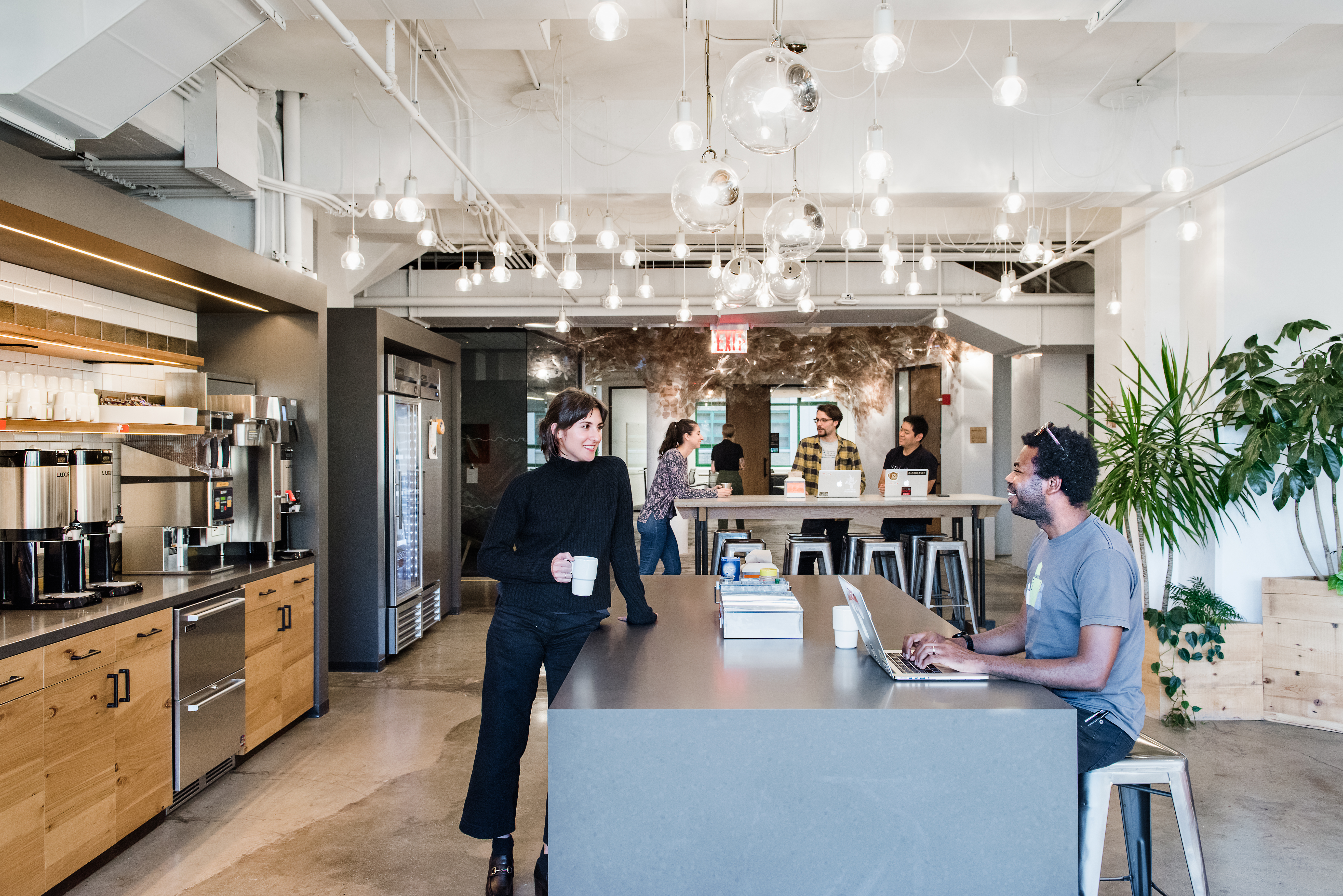In this ongoing series, we explore what the open office introduced to work life, what of it will remain, and how it’s changing.
The open office is taking a slow bow, as more and more companies transform their design to meet today’s highly mobile workforce. Some of us might believe that we witnessed the entire lifespan of the approach, from its thrilling appearance on stage at the end of the 20th century to its tired goodbye. But we would be wrong.
What we thought was an introduction in the late 1990s was more of a return visit. In fact, open office designs predated cubicle farms. The style’s popularity diminished during the rise of cubicles, but it roared back in the 2000s.
Before we wave goodbye once again to the open office, let’s examine its history. And let’s remember, too, that the open office isn’t really vanishing. Instead, it’s changing.
What’s Old Is New Again: The Open Office Returns
As skyscrapers began decorating cities during the beginning of the 20th century, office design revolving around something called Taylorism blossomed. Named after mechanical engineer Frank Taylor, Taylorism applied science to office design. Workers sat cheek-by-jowl in rows of long desks, while managers watched from surrounding desks. Workers essentially occupied the center of a circle, and managers ringed the interior.
Productivity ruled over everything, including employee satisfaction.
Things shifted in 1939 with the opening of the Frank Lloyd Wright-designed Johnson Wax company’s office in Racine, WI. The building embraced elements of Taylorism, but it also paid more attention to employee experience. Lighting was brighter and more pleasing. The office included several smaller spaces. Cork lined the ceilings to improve acoustics.
Twenty years later, the open office evolved again, based on a German design concept called Burolandschaft. While still open, this design placed more emphasis on collaboration among workers. Instead of a vast sea of desks, Burolandschaft placed workers in pods of desks. Plants divided spaces instead of walls. Collaboration was encouraged.
Cubicles Shut Doors On Open Offices, Until They Rise Again
By the end of the 1960s, more transformation hit the open office as privacy grew more important. Dubbed the Action Office, this style placed dividers around workstations and carved out more diversity in terms of public space. The idea: give employees privacy at their desks but encourage more communication in other parts of the office.
It marked the beginning of the rise of walls around desks. It led inexorably towards the cubicle farm, with which many of us are far too familiar.
The widespread emergence of the cubicle wasn’t just about privacy. By the 1980s, modular, portable walls were cheap. Placing three walls around every desk didn’t devour much extra space. It was highly affordable, and it offered at least shreds of privacy.
Tech Welcomes the Return of the Open Office
But it was anti-collaborative, and as the 1990s ripened and the nimble, collaboration-obsessed tech industry began its meteoric ascent, those walls started coming down. The open office emerged once again as the preferred office design for forward-thinking companies. In 2015, Facebook opened Building 20 in Menlo Park, CA, which became at 430,000 square feet the largest open office in the world. Frank Gehry designed the vast space for 2,800 Facebook employees.
Open Office Design Dips Again As New Styles Emerge
Just four years after Facebook’s grand celebration of the open office, the trend appears to be fizzling. Ubiquitous WiFi, slim laptops, and smartphones helped nurture a generation that expects extreme mobility. Out: prairies of individual desks with conference rooms and kitchens as the only alternatives. In: myriad spaces scattered throughout, offering employees different environments for varying kinds of work and moods.
Open office design figures into the office of today and the future. The difference? Instead of describing 90 percent of the square footage (minus meeting rooms, kitchens, waiting areas, and bathrooms), the open office will remain as one of several environments within the footprint.
We think the open office stands as a dramatic improvement over the cubicle farm, and its evolution fascinates us. What advantages did it deliver to offices? How is it changing? What of the open office will remain? We hope you find our deep dives into the open office and its transformation interesting, useful, and enlightening.
